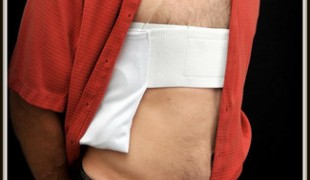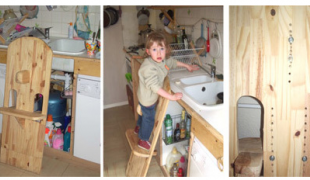- 4903
- 354
- 5
- 4
- 0
- Help Ukraine
About the solution
Jon, as an anesthesiologist, saw several foot amputations among patients with diabetes that were caused by infected foot ulcers. “My dad is a veteran, and he gets his care through the VA (Veteran Affairs). And when I’d go with him to the hospital, I’d see a lot of veterans in wheelchairs. A lot of people assume that’s from combat trauma, but it’s usually from diabetes. Some days, I would spend the entire day doing nothing but amputations. It’s a major problem we haven’t really moved forward on”, he explained.
The medical doctor enrolled in MIT’s Sloan School of Management, studying on the entrepreneurship track. At that time, he participated at a hackathon, where 100 people were invited to start a company in health care, and someone suggested working on foot ulcers. This reminded him of the patients he saw with this problem, so he decided to use this opportunity to finally try to find a solution for this condition.
And this is how Remote Temperature Monitoring System™, a mat with sensors that detect ulcers by measuring heat patterns in a patient’s feet over time, was first invented. “A wireless, in-home monitoring technology that collects foot temperature scans. Step on it for twenty seconds a day and we'll take care of the rest”, says on the official website. As the tissue in the foot breaks down before an actual wound develops, the body has an inflammatory response, increasing the blood flow to the affected area. That inflammatory response leads to a hyperlocal temperature spike, which is picked up by the sensors in the mat. A patient stands on the mat for about 20 seconds per day, and the measurements are sent to the cloud.
Jon co-founded Podimetrics, in 2011, (he is the company’s CEO) to commercialise the solution he and his team projected. Two years later, the device was developed and the team ran successful clinical trials.
“We put out a trial in diabetes care and we were able to detect 97 percent of foot ulcers more than five weeks before they happened. One of the reasons it worked so well was that we had extremely high adherence.”
By catching ulcers early, doctors can treat them before the patient develops serious complications - or potentially stop the wounds from developing, avoiding amputations.
Jon’s goal is to have no more diabetes-related amputations across the VA.
Adapted from: https://bit.ly/2yPZooC
https://bit.ly/2zkvbhJ
https://bit.ly/2wbFsgA
https://bit.ly/2ZsZFc2
More info: https://www.podimetrics.com/
This solution shall not include mention to the use of drugs, chemicals or biologicals (including food); invasive devices; offensive, commercial or inherently dangerous content. This solution was not medically validated. Proceed with caution! If you have any doubts, please consult with a health professional.
DISCLAIMER: This story was written by someone who is not the author of the solution, therefore please be advised that, although it was written with the utmost respect for the innovation and the innovator, there can be some incorrect statements. If you find any errors please contact the patient Innovation team via info@patient-innovation.com
-
-
1065
-
69
-
73012

Boy plays the piano to cope with his disease
Playing an instrument
Charcot-Marie-Tooth Disease
Strategy/Tip
Stiffness or rigidity (difficulty moving)
Trouble with fine motor skills (e.g., writing, buttoning clothes)
Twitching or involuntary movements (myoclonus)
Managing pain
Promoting self-management
Preserving Organ Function
Preventing (Vaccination, Protection, Falls, Research/Mapping)
Raise awareness
General and Family Medicine
Neurology
Pediatrics
Portugal
-
-
-
861
-
0
-
24099

Pouch for people undergoing chemo
-
-
-
675
-
0
-
17849

Parents develop structure to help their daughter stand
STANDING UP: Standing up from a seated position
WALKING: Walking
Cerebral Palsy
Assistive Daily Life Device (to help ADL)
Gait abnormalities (e.g., walking difficulties, unsteady gait)
Tremors
Muscle cramps or spasms
Stiffness or rigidity (difficulty moving)
Paralysis of the legs and lower body
Muscle weakness
Twitching or involuntary movements (myoclonus)
Fatigue
Restoring mobility
Promoting self-management
Managing Neurological Disorders
Maintaining Balance and Mobility
Preventing (Vaccination, Protection, Falls, Research/Mapping)
Caregiving Support
General and Family Medicine
Neurology
Pediatrics
France
-
 en
en